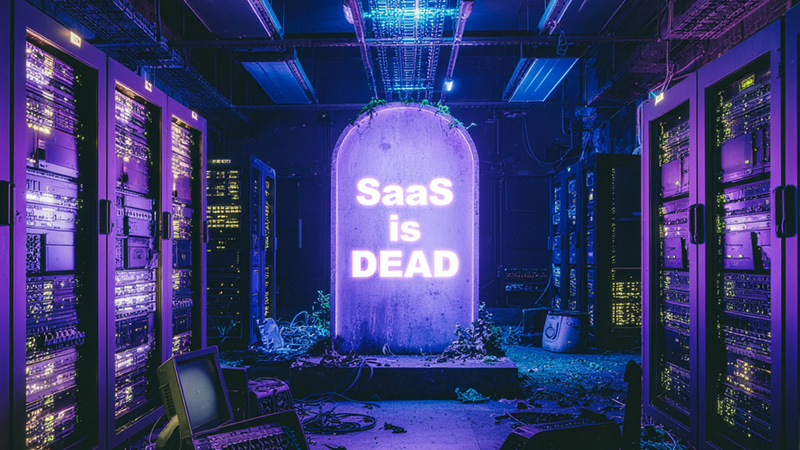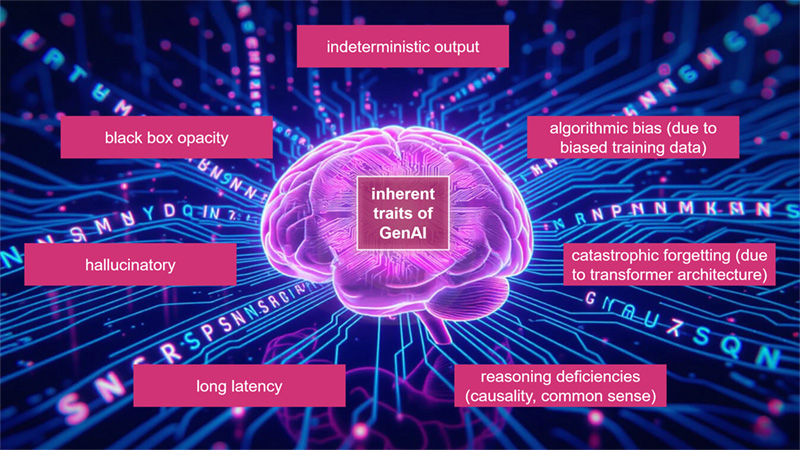Is SaaS Really Dead?
Recently, a heated conversation instigated by a News Stack article has made its rounds among the tech and investor community, claiming that LLM agents are going to kill SaaS. While such a bold statement is certainly attention-grabbing, sweeping generalizations like this are seldom true. The reality is more nuanced. While some SaaS will die, some will likely remain and even thrive. Let’s try to understand why.
Built-In Limits of Transformer-Based LLMs
The key lies in recognizing that there are some inherent traits of transformer-based language models that make them unsuitable for certain applications. It is important to note that these inherent traits are not bugs or problems that can be fixed or patched away as LLMs scale and become smarter. They are intrinsic properties of how the LLMs are designed, built, trained, and how they work. So, no matter how advanced these LLMs become, they will continue to exhibit these traits.
So what are some of these inherent traits that conflict with application requirements?
- Indeterministic Output: LLMs will generate different answers even when given the same input. This randomness can spark creativity and variety, but it undermines applications that demand precision, consistency, and repeatability.
- Black-Box Opacity: The inner workings of an LLM are not transparent. We cannot easily explain why the LLM gave a particular answer, even though it may be a perfectly good answer. For industries that require explainability, controllability, or accountability, this lack of transparency makes LLM-based systems unfit.
- Reasoning Deficiencies: Transformers-based LLMs excel at recognizing statistical patterns but struggle with causality, true logical reasoning, and common sense. This means they are not suitable for applications that require causal inference and problem diagnosis.
- Long Latency: Running transformer models requires a significant amount of compute, making them slow compared to traditional software designed for real-time needs. These relatively long latencies are unacceptable for applications that must operate in real-time.
- Hallucinations: LLMs sometimes produce confident answers that are simply false. These hallucinations may be acceptable in brainstorming or creative writing, but they are disastrous for SaaS tools that depend on factual integrity, reliability, and accuracy.
- Algorithmic Bias: This inherent trait of LLMs arises from the fact that they are trained on human-generated data, which inherits and amplifies all the human biases. This poses serious risks for use cases where fairness, non-discrimination, and regulatory compliance are essential.
- Catastrophic Forgetting: This intrinsic property is a result of the transformer architecture that gives LLM only a fixed and finite context window that functions as its limited working memory. This means that as the LLM learns, whether through retrieval augmented generation (RAG) or model fine-tuning, its old memories can be overwritten. Since transformers are not designed for stable long-term memory, transformer-based LLMs are not applicable in use cases that require long context coherence.
Applications that LLMs Can’t Displace Yet
Now, if you compare the inherent properties (above) against the various requirements (below) for enterprise applications, it will be obvious that LLM agents are not suitable in many use cases. For the following list, if your SaaS must meet only one of the following application requirements, then you are probably safe from immediate agentic disruption. Clearly, the more requirements you check, the safer you will be.
So let’s examine the requirements that make LLM agents unsuitable for the job.
- High precision, output consistency, and repeatability: For enterprise systems where every calculation or transaction must be exact, this requirement is a dealbreaker (e.g. financial transactions, engineering calculations, etc.).
- Explainability, controllability, accountability: Any application that requires you to provide a reason behind even a good decision would render LLM useless (e.g. loan approval, credit scoring, medical diagnosis and treatment, etc.).
- Causal inference: Any use case that requires root cause analysis or problem diagnosis would make LLM agents unsuitable candidates (e.g. manufacturing failure root-cause analysis, scientific research, etc.).
- Real-time responsiveness: Anything and everything that requires real-time (~millisecond) response is probably not suitable for LLM agents (e.g. fraud detection, high-frequency trading platforms, autonomous driving control, etc.).
- Factual integrity, reliability, accuracy: Any application that has low tolerance for inaccuracy would not be applicable for LLM agents (e.g. court filing, legal contracting, literature review and meta-analysis, etc.).
- Fairness and non-discrimination: LLM agents would not be suitable for any use case that has strict regulatory compliance for fairness (e.g. HR platforms for hiring, recruitment, and interviews; judicial risk assessment, etc.).
- Long-term planning and long-context coherent: Lastly, LLM is probably not a good candidate where long-history and long-context (beyond the LLM’s context window length) are required (e.g. multi-year strategic planning, financial and retirement planning, etc.).
While LLMs are powerful, they are inherently not suitable for many applications. In fact, many SaaS categories are specifically designed to deliver capabilities that LLMs cannot achieve, including real-time performance, precision, reliability, accountability, fairness, etc. However, this doesn’t mean that LLMs cannot be used in any of the above precluded applications at all. We just shouldn’t use them in the specific features that have those precise needs that rule out the use of LLM.
Therefore, SaaS companies should not ignore LLMs either. SaaS platforms that thoughtfully integrate GenAI will unlock massive value. Because LLM agents can complement where traditional SaaS falls short, specifically around features that involve language and unstructured data.
Conclusion
So, is SaaS really dead? Some are! Especially if you don’t check any of the requirements that immediately preclude the use of LLM. However, some will survive, be reshaped, and complemented by LLM agents. And as with any new technology, some will even thrive when they can take advantage of the best of both the new and existing tech.
After all, we’ve seen this played out before. When social media first exploded, many proclaimed that email was dead. Today, after 20+ years, despite the rise and fall of countless social media platforms, email remains one of the most dominant forms of digital communication. We simply have more options on how we like to communicate.




